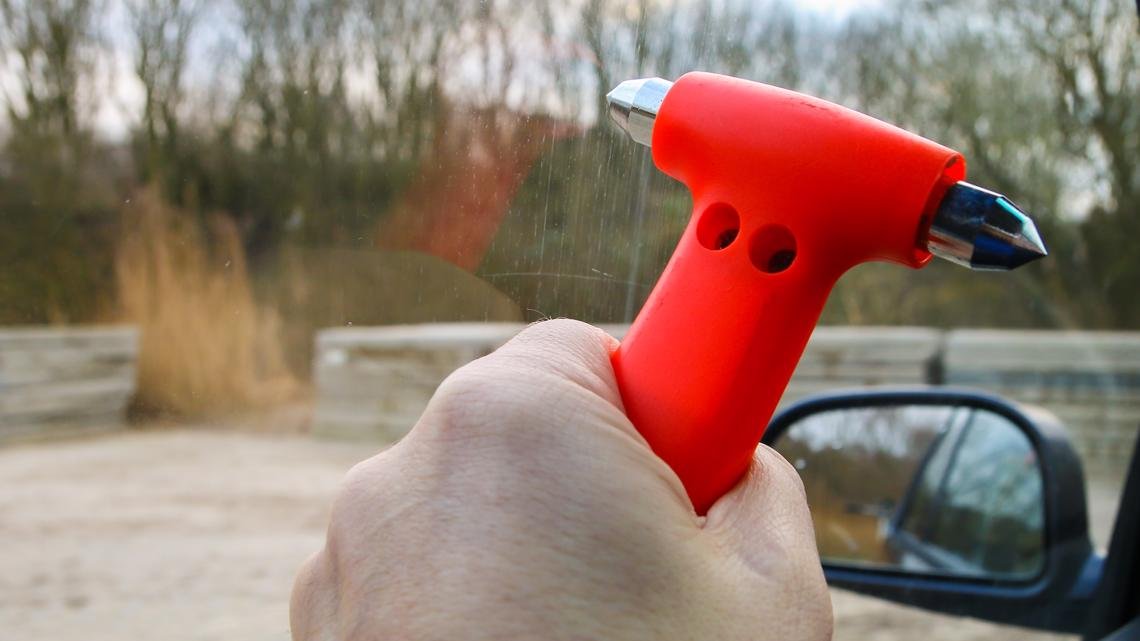If you’ve been scouting outdoor stores for a window breaker, you’ve likely encountered mixed sentiments about this emergency escape tool. Perhaps some of those remarks have come close enough to dissuade you from investing in the equipment.
Despite a window breaker being one of the most resourceful emergency extrication devices, much misinformation surrounds the equipment and its application. Fortunately, we’ve taken the liberty to separate facts from fiction to set the record straight on the glass breaker tool.
Read below as we debunk the five most common window-breaker myths.
Photo Credit: BattlBox.com
Myth #1: You Don’t Need a Window Breaker
This is arguably the most widespread myth associated with glass breakers. The reality is that a window breaker tool should be an indispensable component of your vehicle’s safety kit.
According to statistics, an estimated 40,990 people died in automobile traffic accidents in the United States in 2023. While these figures represent a 3.6% decrease compared to 42,514 fatalities reported the previous year, they still paint a grim picture of the dangers on our roads.
Now, it’s worth noting that a significant percentage of all auto crash deaths are due to rollovers. Multiple findings have shown that about half of all rollover accidents end in fatalities.
Having a glass breaker tool may not prevent a fateful accident from occurring. However, it can significantly improve your chances of egressing an overturned car. All you need to do is break a window and escape the vehicle before the situation slips out of hand.
Myth #2: Window Breakers Are Only Useful During Rollovers
Many people consider glass breakers as only helpful in egressing rollover accidents. Those who subscribe to this school of thought may not appreciate the significance of this safety device, arguing that rollovers are relatively fewer than other types of auto accidents.
Unknown to them, a glass breaker tool can be useful in many other vehicular emergencies.
You can deploy the tool to escape a burning, sinking, or submerging car. The device may also make a significant difference if your vehicle suddenly develops electrical malfunctions that cause the doors to jam.
In fact, a window breaker’s significance goes beyond the automotive and transport industries. You could use the equipment to facilitate safe egress from buildings during emergencies, preventing deadly stampedes at the common exit points.
Photo Credit: Pixabay.com
Myth #3: Window Breakers Have Limited Functionalities
To many people, a window breaker is exclusively designed to break glass during emergency situations. That potentially makes it a less worthy investment than multi-functional everyday carry (EDC) items, such as a utility knife and the manual multi-tool.
However, modern glass breakers, notably seat belt cutters, come with additional functionalities.
The tools feature an in-built razor-sharp blade that lets you slice through jammed seatbelts, further improving your chances of escaping a stuck vehicle after an accident. Simply angle the seatbelt cutter diagonally for a quick and clean cut.
The razor blade is made from highly durable and anti-rust stainless steel. It also remains concealed within the glass breaker tool, minimizing injuries to your hand while deploying the window breaker.
Photo Credit: Pixabay.com
Myth #4: Window Breakers Work on All Glasses
Window breakers come with tungsten carbide tips designed to smash tempered glass. However, the tools are ineffective at breaking laminated windows.
Tempered glass is manufactured in highly controlled environments using precision thermal and/or chemical treatments. This adds a layer of toughness to the glass, making it considerably challenging to break. However, the tempering concept entails putting the outer glass surface into compression and the inner surface into tension. As a result, the glass is exceedingly difficult to break from the outside but more accessible from the inside.
On the other hand, laminated glass consists of at least two layers of glass bonded together with a polymer.
Now, the primary difference between tempered and laminated glass is in how they break. Tempered glass shatters into small pieces, while laminated glass only breaks at the impact point. Note that most automobiles’ side and rear windows are made from tempered glass. Therefore, these are the windows to target with a glass breaker.
Myth #5: All Window Breakers Are Made Equal
The only similarity among all window breakers is that they’re meant to smash tempered glass. Other nifty features depend on the tool you pick.
For instance, some window breakers resemble the traditional hammer, while others come as wrist straps. The latter is an excellent recommendation if you’re looking for a discreet safety tool.
Window breakers also differ across other parameters, such as ease of use and average durability.
Wearable versions have proven to be remarkably easy to deploy than their traditional hammer-styled counterparts. As for durability, it depends primarily on the material used for a window breaker’s business end. Tungsten carbide is presently the gold standard for glass breaker ammunition tips.
Photo Credit: Pixabay.com
The Bottom Line
The first step when shopping for a window breaker is to appreciate the tool’s capabilities and understand its limitations. And there’s no better way to do that than to demystify common misconceptions about this emergency escape device.
After recognizing the significance of a glass breaker, the next step is to pick a reliable tool for the job.
Ensure the window breaker’s projectile is made from rigid materials like tungsten. It’s also prudent to gauge the tool’s ease of deployment by comparing its size, weight, and ergonomics against its competitors.

